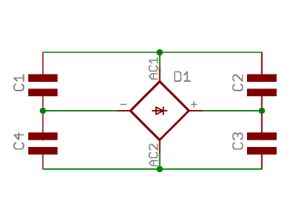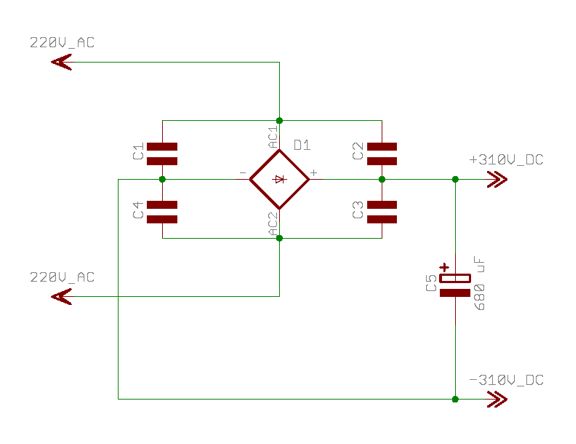As the AC waveform rises through 0V, one or more diodes in a rectifying bridge of a power supply will switch on. These diodes will stay switched on until the waveform falls through 0V, at which point the other diode or diodes will switch on. All diodes need a minimum forward bias before they will switch on. Silicon diodes typically require 0.7V. This implies that there is a dead zone positioned symmetrically about 0V when no diodes conduct. The transformer, being inductive, has been switched off, and tries to maintain the current flow, but in doing so, it generates a voltage. Fortunately, there are many stray capacitances within the transformer to prevent this voltage from rising very far, but if we are unlucky, the shock applied to the system may excite a resonance resulting in a damped chain of oscillations. Luckily, this problem could be cured by bypassing each individual diode with a 0.01 uF film capacitor having a voltage rating equal to the diode Vrrm rating.

Whether we use a bridge rectifier or a centre-tapped rectifier, we still apply the same waveform to the succeeding circuit. The waveform, although it is of only one polarity, is not a smooth DC. The function of the smoothening element is to reduce the ripple, either to a satisfactory level, or to a level such that a regulator can cope with it. The simplest way to smoothen the output of the rectifier is to connect a reservoir capacitor across it. and feed the load from this reservoir. Assuming no load current, the capacitor charges to the full peak value of the AC leaving secondary winding of the transformer which is determined by the formula below:


The output of the rectifier tops up the charge in the capacitor every cycle, so that at the peak of the waveform, the capacitor is fully charged. The voltage from the transformer then falls down sharply, and switch off the rectifier diodes. Load current is now supplied only from the capacitor C5, which discharges exponentially into the resistive load until the transformer output voltage rises sufficiently to recharge the capacitor, and restart the cycle.
Although the reservoir capacitor theoretically discharges exponentially, the discharge curve may be taken to be a straight line. And if the load is a series regulator, the discharge curve is certainly a strait line. Given this approximation, it is easy to calculate what the output ripple voltage will be. Let's assume that the output current of our power supply is 250 mA, then we are able to calculate Vripple by the following formula:

Accordingly, capacitor C5 has to have voltage rating of at least 310VDC.
The reservoir Capacitor C5 charges to the voltage peaks leaving the rectifier, so the ripple voltage is subtracted from the voltage leaving the rectifier and reduces the output voltage. The output voltage can be described to be made up of two components - VDC that is pure DC, and Vripple that is the superimposed AC ripple voltage. The significance of this fact is that subsequent filtering is required to filter AC component out to leave only the DC component.
